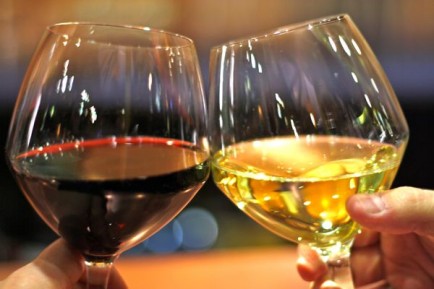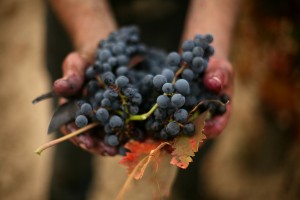
Red or white, French or Italian – it doesn’t matter, it is probably a Spanish plonk that you are drinking.
You’ve been drinking Spanish wine recently, even if you don’t know it. Despite exporting more wine than any other nation in the world – shipping 2.3 billion litres and surpassing Italy last year in terms of volume – Spanish wine is suffering from something of an image problem.
Sure, your local off-licence will have a fair selection, and the larger supermarkets in the UK have certainly upped their game when it comes to offering a wider choice of riojas and tempranillos, but the fact is, you really all should be drinking more ‘Spanish’ wine…
Exports from Spanish vineyards have tripled since 1995, and grew in 2014 by 22.4%. The problem, though, is that Spanish wine tends to dominate the low-price, low-profit bulk market, accounting for 55% of all exports.
This bulk market serves to underpin much of Europe’s wine industry, meaning it is not unusual – actually quite common – for wine made in Spain to be shipped to France, bottled, marked up and sold as a French product.
This is not a secret. France is Spain’s largest wine customer, importing 518 million litres in 2014 for just €0.47 per litre. It is a cosy deal that ensures the Spanish winegrowers are able to shift their standard produce, while the French wine houses – with a reputation to uphold, don’t you know? – get to keep their customers happy with well-priced, delicious plonk.
The same thing happens in the olive oil trade. Spanish olives form the bulk of Europe’s produce, but the majority of oils are shipped to Italy and repackaged as Italian produce.
“We have the best olive oil in the world and it’s sent to Italy and sold as Italian,” laments María Urrutia, Marketing Director at Haro winery CVNE. “We send our wine to France and it’s sold as French. Why aren’t we able to do that?”
The value of a French wine label is mutually beneficial to both Spanish winemakers and French wineries, and now Italy has cottoned on to the same trick, raising the price of its wine – much of it made from Spanish produce – from €1.41 per litre in 2000 to €3.50 per litre today.
Spain, meanwhile, has seen the price of its bulk exports fall over that same time, from €1.41 per litre in 2000 to just €1.17 today.

Grape expectations: Spanish wine growers know that they can always shift their produce to France, and now, Italy.
“The real question,” San Francisco State University professor of management Rick Castaldi told Fortune magazine, “is why has Spain failed in branding their wines in global markets despite having an excellent product?”
Perhaps it is an altruistic move by the kind and generous Spanish people to ensure that their delicious plonk remains affordable for all? After all, Spanish wine in Spanish supermarkets is uniformly of a good standard and always cheap. Try to find a good French or Italian wine in a Spanish store and you will be laughed out of town.
Image, though, matters a lot elsewhere, and if Spain can tweak its marketing strategy to convince the world that its wines are as good as – if not better – than those from France and Italy, the country could be on to a money-spinning winner.
There are problems at the regulatory level, however. Spain’s DO Control Board, which oversees the 20,000 different Spanish wine brands, is run by winery heads, not vineyard owners, and as such have imposed a peculiar ban on publishing on the label exactly where the grapes were grown.
This means that those who control the industry want to place the value of the wine into the blends they create and the labels they design, whereas vineyard owners – because they own the land and terroir, or soil, of where the grape was produced – have a vested interest in letting the world know the value of their terrain.
But in Spain, unlike in France and Italy, these guys are not in charge. Being granted DO status – which is something the Rioja region boasts – is awarded with the intention of recognising the wine’s quality, but it also means that consumers are denied the critical information of exactly where the grapes were grown, which also means Italians and French producers can swoop in, safe in the knowledge that the average consumer will be none-the-wiser.
Some producers are fighting against these strictures, though, and looking to break free from DO regulations in order to let the quality of their wines speak for themselves.
This route, while admirable, could pose other problems. Quality of produce can only get a wine so far – the rest relies on marketing, positive associations, a good back story or history, and many other ingredients that are often as nuanced as a good wine itself.
It’s a tricky situation that has no easy solution for the wine growers. The consumers, however, can rest easy in the knowledge that whether French, Italian or certifiably Spanish, you are probably drinking a wine grown in Spain, with all the delicious connotations that go with it.
 en
en



 Vlaams-Nederlands
Vlaams-Nederlands
0 Comments
Leave a Comment
DISCLAIMER
The opinions and comments expressed by contributors to this Blog are theirs alone and do not necessarily reflect the views of VIVA Homes Under the Sun Ltd, any of its associated companies, or employees; nor is VIVA to be held responsible or accountable for the accuracy of any of the information supplied.
Have you got something to say?